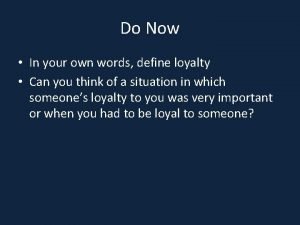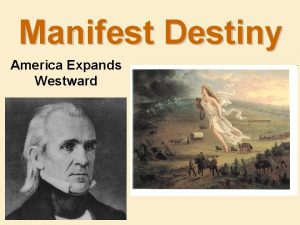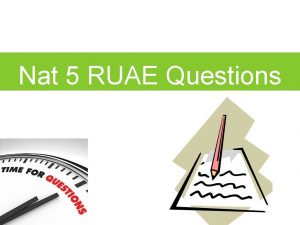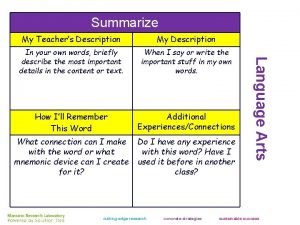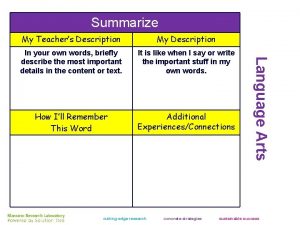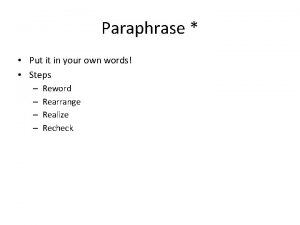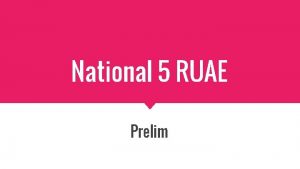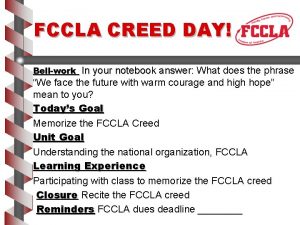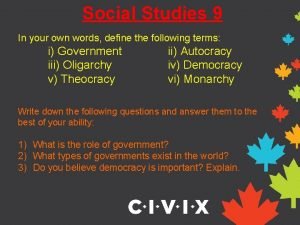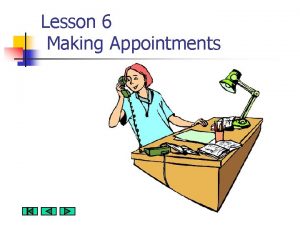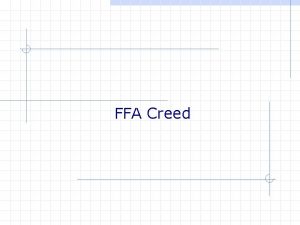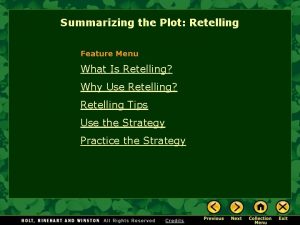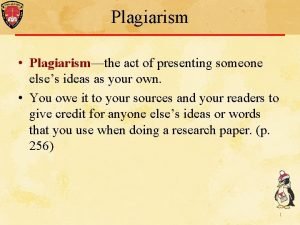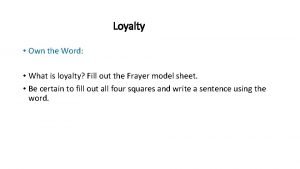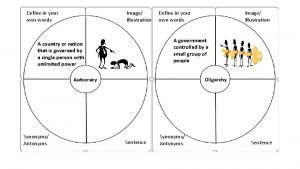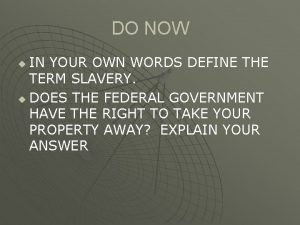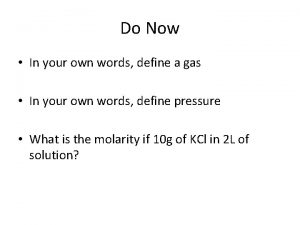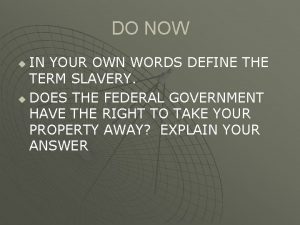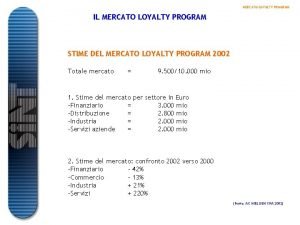Do Now In your own words define loyalty




























- Slides: 28

Do Now • In your own words, define loyalty • Can you think of a situation in which someone’s loyalty to you was very important or when you had to be loyal to someone?

Reading • Read the first paragraph of the reading from the front

Goals for today Define important terms that are associated with feudalism Explain the factors that led to the rise of Feudalism in Europe Identify the roles of kings, lords, knights, and serfs in the Feudal System Evaluate the Feudal system

Periodization Early Middle Ages: 500 – 1000 High Middle Ages: 1000 – 1250 Late Middle Ages: 1250 - 1500

The Middle Ages or Medieval Period ( 500 CE -1500 CE. ) Barbarian Invasions cause the Fall of the Western Roman Empire Rise of New Kingdoms/ States that are not united New Kingdoms are unable to protect themselve s from Barbarian Invasions, causing a need for localized Protection The Rise of Feudalism in Europe

Europe in the 6 c

Feudalism • Political and social system based on the granting of land in exchange for loyalty, military assistance, and other services

Feudalism • Developed as a result of frequent invasions in western Europe • Kings and nobles needed a way to protect their lands

Feudalism • Lords divided their lands into estates called fiefs • Fiefs (land) given to vassals in return for loyalty and military support • All nobles were vassals to the King

Feudalism • Knights – Mounted warriors who protected lord’s lands – Given land for their services – Chivalry • Code of ethics followed by knights • Honesty, fairness in battle, loyal, proper treatment of women

What is a Knight? • Almost all nobles were knights • Training began at age 7, as a page, under the guidance of the lady of the manor • Became squires at age 15 and were trained by other knights • Those deemed worthy were “dubbed” knights 11


Feudal Obligations Knights Obligation to Lord’s Obligation to Knights • Provide military service • Remain loyal and faithful • Give money on special occasions • Give Land • Protect from attack • Resolve disputes between knights

Peasants and Serfs • Serfs – Peasants who lived and worked on the lord’s manor – Were not allowed to leave the manor or marry without the lord’s permission – Were allowed to farm on the manor in return for work • Lords were required to protect the serfs

Life of Serfs • The life of a serf was harsh – Worked long hours – few lived past 35 years old – Based on heredity • You were a serf if you parents were

Manorial System • Freemen – skilled workers who paid rent to nobles and could leave the manor • Ex. Blacksmith and millers

Constructing the Pyramid Feudal Power SERFS AND FREEMEN 17

Constructing the Pyramid of Feudal Power LESSER NOBLES (KNIGHTS) LABOR PROTECTION SERFS AND FREEMEN 18

Constructing the Pyramid of Feudal Power POWERFUL NOBLES LAND PROTECTION LOYALTY AND MILITARY SERVICE LESSER NOBLES (KNIGHTS) LABOR PROTECTION SERFS AND FREEMEN 19

Constructing the Pyramid of Feudal Power KING LOYALTY AND SERVICE LAND POWERFUL NOBLES LAND PROTECTION LOYALTY AND MILITARY SERVICE LESSER NOBLES (KNIGHTS) LABOR PROTECTION SERFS AND FREEMEN 20

Carcassonne: A Medieval Castle

Parts of a Medieval Castle

Manorial System • An economic system in the Middle Ages that was built around large estates called manors • Included a village and the land surrounding it

Manorial System • Manors were self sufficient – Most things needed for daily life were produced on the manor



Class Reading • Read pages 53 -54 in the amsco book • Take notes over Feudalism and life on the manor

Exit Ticket • Compare and contrast the feudal system with current way we live TODAY • Use information that you have learned today • Must be written in paragraph form
 Define loyalty in your own words
Define loyalty in your own words In your notebook define the following terms in your own
In your notebook define the following terms in your own Define acceleration in your own words
Define acceleration in your own words Define manifest destiny in your own words.
Define manifest destiny in your own words. Photography literally means
Photography literally means Define science in your own words
Define science in your own words What type of sae is when you own your own business
What type of sae is when you own your own business Making new words your own
Making new words your own Own words questions national 5
Own words questions national 5 Describe them briefly
Describe them briefly Description in your own words
Description in your own words Describe the dream that romeo has just had
Describe the dream that romeo has just had Put in my own words
Put in my own words Higher english ruae question types
Higher english ruae question types Explain the fccla creed in your own words.
Explain the fccla creed in your own words. Ffcla creed
Ffcla creed Using your own words
Using your own words Oligarchy explanation
Oligarchy explanation Put it in your own words
Put it in your own words Quote summarizer
Quote summarizer Making new words your own lesson 6
Making new words your own lesson 6 What is intramurals
What is intramurals Ffa creed paragraph 4
Ffa creed paragraph 4 In your own words questions
In your own words questions Duffys jacket
Duffys jacket Presenting someone else's words or ideas as your own is
Presenting someone else's words or ideas as your own is When viewed with a compound light microscope the letter p
When viewed with a compound light microscope the letter p In your own words explain are entrepreneurs born or made
In your own words explain are entrepreneurs born or made Your conscious awareness of your own name
Your conscious awareness of your own name
